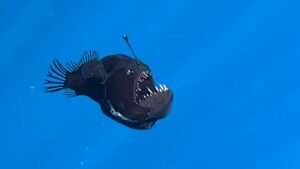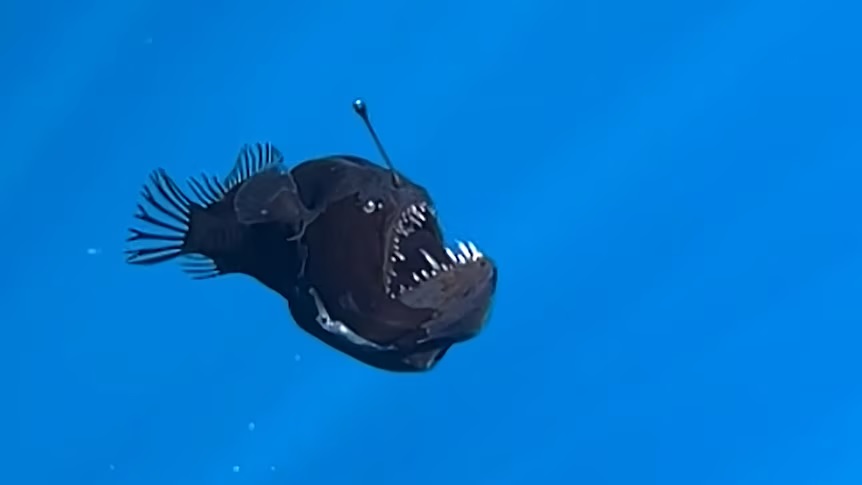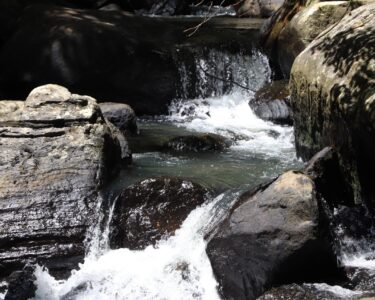In a ground-breaking discovery, scientists have managed to capture rare footage of a black seadevil anglerfish swimming in shallow waters—a sight previously unseen by most of the world. The unusual fish, which is typically found in the dark depths of the ocean, was spotted off the coast of Spain’s Canary Islands, adding to the intrigue surrounding this elusive creature.
The female humpback anglerfish, often referred to as the “black sea devil,” was spotted during a shark research expedition led by Condrik Tenerife, an organization dedicated to shark and stingray research. The expedition team, which was conducting research on pelagic sharks, had ventured into deeper waters when they made the unexpected discovery.

“This could be the first recorded sighting in the world of an adult black devil alive, in broad daylight and on the surface,” the Condrik team shared in an Instagram post. The black seadevil is typically found in the deep sea, at depths of up to 1,500 meters, where sunlight never reaches.
The anglerfish, which is known for its dark, sinister-looking appearance, sharp teeth, and monstrous shape, was an astonishing find. Often depicted in popular culture—like in the 2003 animated film Finding Nemo—the black seadevil uses its bioluminescent lure to attract prey in the darkness of the ocean. In the movie, the creature is portrayed as a terrifying underwater predator, but for scientists, the opportunity to study this deep-sea dweller in such unusual conditions was a rare moment of discovery.
Death of the Sea Devil
The creature was first spotted by David Jara Boguñá, a photographer on the research expedition. After capturing footage of the fish, the team spent around an hour observing it before it sadly died. The fish was then transported to the Museum of Nature and Archaeology in Tenerife for further study.
While scientists are uncertain as to why the anglerfish surfaced, some have speculated that environmental factors like El Niño could be influencing the fish’s behavior. This climate phenomenon can disrupt ocean currents, causing changes in water temperatures and potentially pushing deep-sea creatures to shallower depths.
“There could be thousands of reasons why it was there,” said marine biologist Laia Valor, a member of the research team. “We simply don’t know. It’s an extremely rare and isolated sighting.”
The sighting of this black seadevil anglerfish is not just important for understanding the species, but also for shedding light on the mysteries of deep-sea life. This discovery highlights just how much there is still to learn about the ocean’s depths, and how even the most mysterious creatures can surface under the right conditions.
This sighting also raises intriguing questions about the adaptability of deep-sea species to environmental changes. Could warming oceans and altered ocean currents lead to more sightings of these rarely seen creatures closer to the surface? Only time will tell.
The black seadevil, or Melanocetus Johnsonii, was first discovered in 1863 by the English naturalist James Yates Johnson off the coast of Madeira. It was later studied by Albert Carl Ludwig Gotthilf Günther, who noted the species’ extraordinary form, including its absence of pelvic fins—a feature that makes it stand out even among other anglerfish species.
As scientists continue to study the rare footage of the black seadevil, one thing is clear: the ocean still holds many secrets, and discoveries like this remind us just how much remains hidden beneath the waves.
For those fascinated by the dark depths of the ocean, the black seadevil anglerfish remains one of the most iconic and mysterious creatures of the sea, a true predator of the deep.







